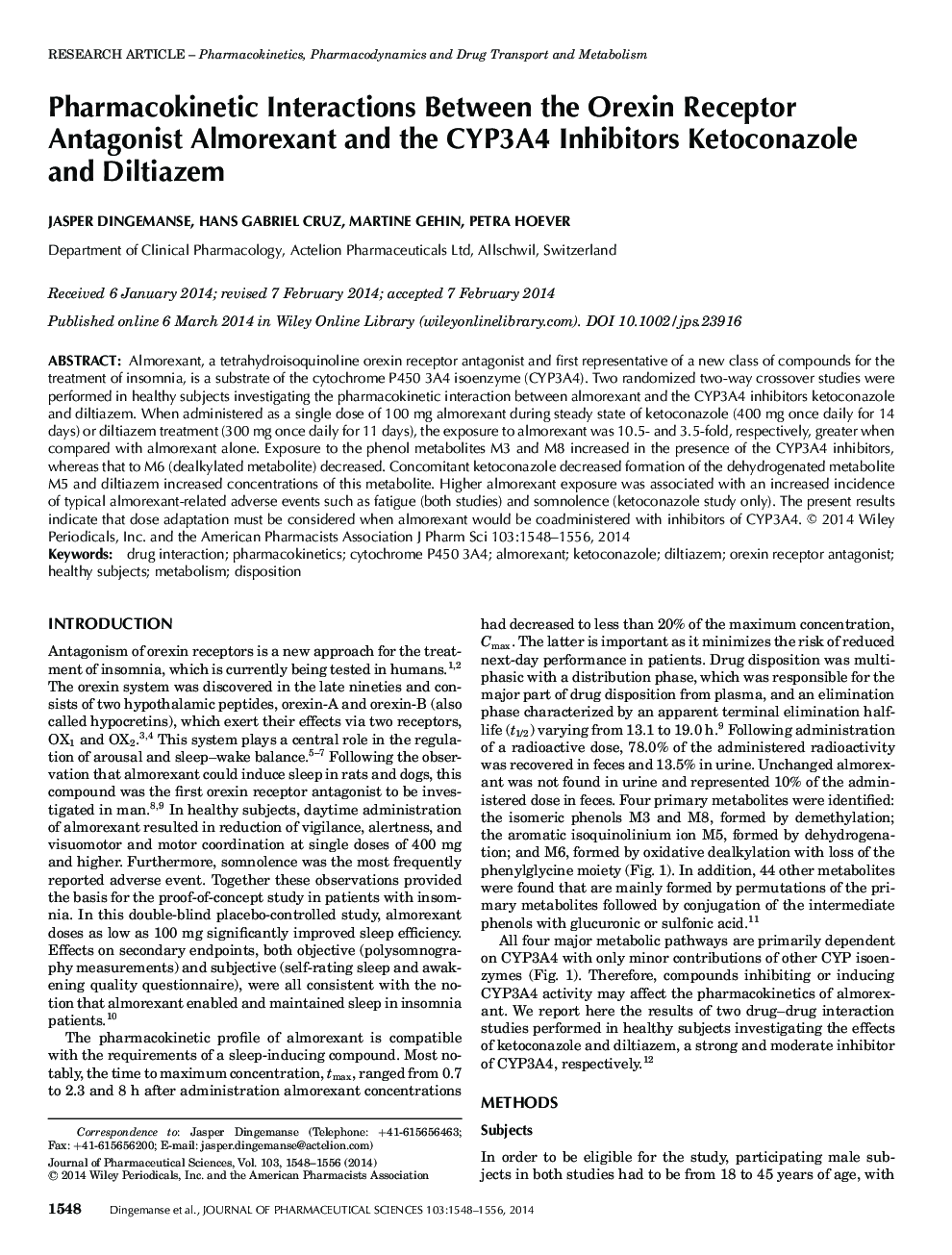| Article ID | Journal | Published Year | Pages | File Type |
|---|---|---|---|---|
| 10162366 | Journal of Pharmaceutical Sciences | 2014 | 9 Pages |
Abstract
Almorexant, a tetrahydroisoquinoline orexin receptor antagonist and first representative of a new class of compounds for the treatment of insomnia, is a substrate of the cytochrome P450 3A4 isoenzyme (CYP3A4). Two randomized two-way crossover studies were performed in healthy subjects investigating the pharmacokinetic interaction between almorexant and the CYP3A4 inhibitors ketoconazole and diltiazem. When administered as a single dose of 100Â mg almorexant during steady state of ketoconazole (400Â mg once daily for 14Â days) or diltiazem treatment (300Â mg once daily for 11Â days), the exposure to almorexant was 10.5- and 3.5-fold, respectively, greater when compared with almorexant alone. Exposure to the phenol metabolites M3 and M8 increased in the presence of the CYP3A4 inhibitors, whereas that to M6 (dealkylated metabolite) decreased. Concomitant ketoconazole decreased formation of the dehydrogenated metabolite M5 and diltiazem increased concentrations of this metabolite. Higher almorexant exposure was associated with an increased incidence of typical almorexant-related adverse events such as fatigue (both studies) and somnolence (ketoconazole study only). The present results indicate that dose adaptation must be considered when almorexant would be coadministered with inhibitors of CYP3A4. © 2014 Wiley Periodicals, Inc. and the American Pharmacists Association.
Keywords
Related Topics
Health Sciences
Pharmacology, Toxicology and Pharmaceutical Science
Drug Discovery
Authors
Jasper Dingemanse, Hans Gabriel Cruz, Martine Gehin, Petra Hoever,
